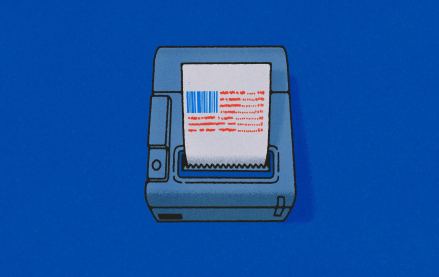
Radio audiences have declined, but audio is as popular as ever. Streaming music alone generated $2 billion in revenue last year, proving that there’s still demand for sound and opportunity for audio publishers.
Delivery methods have changed, but thanks to streaming outlets and podcast publishers, demand for streaming audio grew by 92 percent in 2015 with more than 317 billion individual audio streams clocked across platforms.
There’s just one issue. Most of that inventory is still being sold directly, without the efficiency, the accuracy or the revenue that programmatic has brought to digital display, video, TV, native, mobile and social. Leading streamers like Spotify are slowly changing this tune. By adopting a new wave of tools, Spotify is allowing audio publishers to turn those billions of streams into revenue, using listener data to create tightly targeted segments that advertisers crave.
More profit for publishers
Streaming has given audio publishers another shot at capturing an audience, but reliance on direct selling means that monetizing those growing audiences is costly. Spotify, which introduced a programmatic option in 2015, still maintains a sales team with over 100 members chasing direct deals. Its programmatic efforts, however, are managed by a team of fewer than ten.
Programmatic audio technology is gaining ground, because it allows publishers to convert growing audiences into revenue as they accrue without the same expense of scaling a direct sales operation. But going programmatic isn’t just about the efficiency of algorithms, it’s also about squeezing extra dollars out of the biggest byproduct of digital publishing– data.
Oscar Garza, global director of programmatic for Essence Digital, pointed to this opportunity as the big hidden win of programmatic audio. “The ad revenue not only scales with the size of their service,” he notes, “but the data can be licensed as an stream.”
Ad position: web_incontent_pos1
Programmatic also opens the door to bigger spending on audio according to Sean Black, EVP of digital investments at Amplifi. “Streaming budgets have definitely been increasing with their ability to continue to measure and provide strong targeting.”
Audio ads that matter
Aside from increasing publisher revenue for streaming content, the programmatic future also offers a return to the localized past of terrestrial radio. Streaming audio is global, but it can approach the local relevance of regional radio with targeting. Thanks to the gobs of data about streaming listeners, advertisers can simulate intimacy with personalization.
“The data within these platforms has grown significantly.” Says Sean Black, “From your typical demo and interest targeting down to local geo specific.”
According to Garza, this familiarity will allow audio publishers to make the most of programmatic by offering advertisers the kind of precision targeting they need to reach listeners on a personal level, using geographic, day-part, and technographic data. He adds that, “platforms can overlay their 1st party data for listening patterns or genre,” to enable even more sophisticated targeting.
Ad position: web_incontent_pos2
That ability to overlay audience segments with listening patterns allows advertisers to target people by region, by interest, and by activity to reach users with relevant messaging that fits within the context of their day. Dropping messages straight into the stream and making sure they reach the right earbuds. It’s that same kind of accuracy, that’s expected to turn digital programmatic into a $22 billion industry by the end of 2016.
Making ads that work
Monetization, incremental revenue generation, automation, targeting, all of this is de rigueur for programmatic. What’s capturing more advertisers attention is the fact that programmatic audio’s rich data set enables a deep level of contextual ad placement. Meaning, because users take their music, podcasts and radio with them throughout their day, marketers are able to tailor their messaging to fit the exact moment.
Take viewability, a topic that’s currently at the top of the IAB’s hit list of issues in digital advertising. Audio ads are largely unskippable on ad supported platforms, and unlike video ads consumers don’t have the option to click away to another channel or screen to ignore them. While not technically “viewable” audio ads have nearly 100% consumer attention.
As ad blocking continues to strip display and video inventory advertisers are turning to audio where ad blocking has yet to establish a foothold. The number of unskippable audio ads on ad supported streaming platforms is expected to grow by 55% over the next two years tracking closely with the projected growth in programmatic audio spending expected in the same time period.
Audio is the last frontier where consumers don’t have an easy option for tuning out targeted ads, making it the song of the summer for many advertisers.
More from Digiday
Sliders test article
Amazon bulldozes into new markets, upending the status quo and challenging rivals. Today, it’s the turn of the ad-supported streaming world, and Amazon is coming out of the gate strong. Why, you ask? Because Amazon is serving marketers an opportunity beginning today to reach a whopping 115 million monthly viewers in the U.S. alone, courtesy […]

How CTV and DOOH are growing this political season for smaller agencies
Connected TV and digital out-of-home are playing a bigger role in upcoming elections and politics – especially for smaller agencies looking to place clients’ dollars.

CMO Strategies: Advertisers identify the top attributes on ad-supported streaming platforms
This is the third installment in Digiday’s multi-part series covering the top ad-supported streaming services and part of Digiday’s CMO Strategies series. In this report, we examine which ad attributes matter the most to marketers on streaming platforms.
Ad position: web_bfu